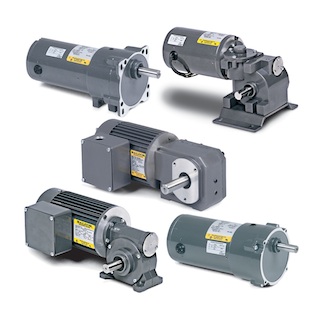A gearmotor is a single component that integrates a gear reducer with either an ac or dc electric motor. Thanks to its gearset, a gearmotor can deliver high torque at low horsepower or low speed.
Gearmotors are most common in applications that need a lot of force to move heavy objects. Most industrial gearmotors incorporate fixed-speed ac motors. However, some gearmotors use dc motors, which are common in automotive applications in adjustable side-view mirrors and automatic seat adjustments.
Addition made June 12, 2015 by Terry Auchstetter via LinkedIn:
“I believe you will find that ‘gearmotors’ are more common in the Fractional Horsepower (FHP) size range, like those pictured in the accompanying photograph in the article, or on the Bodine Electric Co. website. Different economic factors associated with larger-horsepower applications make ‘gearmotors’ less common.”
Gearmotor designs can mix and match motors and gears as needed to best fit application requirements. However, housing design, assembly gearings, gear lubrication, and the specific mode of integration all affect gearmotor performance. Motor and gear-reducer combinations abound: For example, right-angle wormgear, planetary and parallel shaft gears can be combined with permanent-magnet dc, ac induction, or brushless dc motors to form a gearmotor unit.

Though it’s possible to combine many different motors and gearsets, not just any one will work for every application because certain combinations are more efficient and cost-effective than others. This is why knowing the application and getting an accurate estimation of its required torque and operating speeds is the foundation for successfully integrating a gearmotor into a system.
Typically, gearmotors outperform other motor-gear combinations. More importantly, gearmotors simplify design implementation because they save engineers from integrating motors with gears, which in turn reduces engineering costs. If the application requirements are known, engineers can order the right gearmotor from a supplier directly.
What’s more, if a gearmotor is sized properly, having the right combination of motor and gearing can prolong design life and boost overall design efficiency. Gearmotors can also eliminate the need for couplings and potential alignment problems that come with those components. Such problems are common when a design includes the connection of a separate motor and gear reducer — which in turn increases the potential for misalignment and bearing failure.


Leave a Reply
You must be logged in to post a comment.